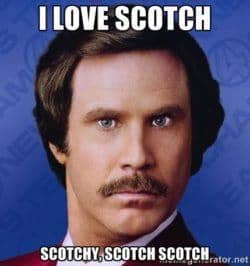 As I've written about before, I like whiskey. I'll say that at the risk of sounding like a drunk. I like the beverage. I'm fascinated with the process — the art and the science of it. I had the chance to visit Speyside region distilleries in Scotland a few years ago.
As I've written about before, I like whiskey. I'll say that at the risk of sounding like a drunk. I like the beverage. I'm fascinated with the process — the art and the science of it. I had the chance to visit Speyside region distilleries in Scotland a few years ago.
I've also been a frequent visitor to the Garrison Brothers distillery, which is located west of Austin in the Texas hill country. They make an excellent “straight bourbon whiskey.” Yes, bourbon can be made outside of Kentucky, as “straight bourbon whiskey” is a federal standard and designation that separates them from “straight whiskey” or “spirit whiskey,” etc. They've won many awards for this craft product and I highly recommend it if you get a chance to order it in a bar or buy a bottle.
They grow their own wheat, collect and purify rain water, and do the entire distilling, aging, and bottling processes themselves. Unlike some “craft” producers, they don't buy spirits from a big Indiana industrial distillery and age it briefly. They're doing this “the hard way,” you might say.
They have a relatively small team that works full time at the distillery. The one part of the process that's very labor intensive is their bottling process. Instead of hiring temporary workers, they rely on their fans and highly-engaged community to serve as volunteers a few times a year.
When the email goes out calling for volunteers, the volunteer slots fill up within 30 or 60 minutes. There's a waiting list of people dying to help. I've been able to do it twice before (I happened to have a home office day and saw the email hit my inbox). The volunteering is work, but t's a lot of fun and we're all very loyal to Dan Garrison and his amazing team.
This week, I'll be volunteering there today and tomorrow..
One thing I enjoy is the opportunity to basically be a “value adding” worker in a process. The work is pretty repetitive (but, again, it's a very enjoyable environment) and it lets me think like an industrial engineer or a “Lean thinker” when I'm not talking with the other volunteers as we work (it's not a “no talking” sweatshop, believe me).
The Overall Process
I won't go into too much detail except for one part of the process I enjoy doing.
Looking at the overall flow, the steps in the process are as follows:
- Bottle filling (done by a full-time employee, because you don't want to spill or waste this product)
- Capping / corking (inserting a cork with a top on it into the bottle)
- Inspection (making sure bits of charred wood from the aging barrels aren't in the bottle)
- “Pigtailing” (putting a leather piece around the bottle top and attaching it with a bit of wax)
- Dipping the bottle top into wax to form a seal
- Inspection (yes, they do it a second time)
- Wiping the bottle of finger prints
- Dan or the master distiller sign each bottle
- Boxing the bottles
The flow is set up pretty well, with a linear flow through the building. All stations are staffed at the same time, so there's minimal WIP that accumulates along the way.
I've done a number of the jobs, but I really enjoy the wax dipping job.
Here are a few pictures of that process, before I talk about Kaizen and improvement. This picture is February 2015 and it was unseasonably cold, hence my winter coat. You can see the flow line and conveyor rollers in the middle of the table. There are people working next to me and across the table from me.
I take a bottle and dip it upside down into a crock pot full of wax:
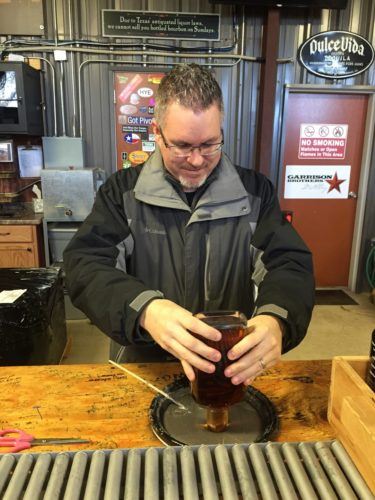
I take the bottle out and let the excess drip down and off the bottle. You can see the crockpot for the person working across the table:
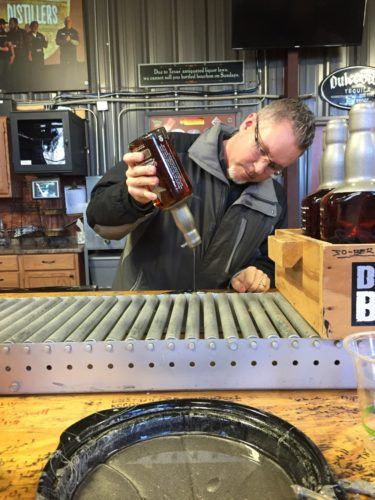
And when the wax dripping is done, you turn the bottle over and emboss a Texas star into the top of the waxed cap:
Training the Volunteers
In their training of the volunteers, it's a somewhat informal process. It's not a Lean “Training Within Industry” type approach with a formal work instruction. The bottling manager will show you how to do the job and watch you do it. You can ask for help or the more experienced volunteers help you.
Reminding me of an informal TWI process, there are a few “key points” (and always-important “reasons why”) that are taught, including:
- Don't hold the bottle down into the wax too long, otherwise you heat up the bourbon and risk the cap and cork coming apart (the glue holding it together might melt).
- Make sure the “pig tail” sticks out from the wax instead of laying flat (otherwise, the bottle would be hard for the buyer to open)
- Avoid bubbles from forming in the wax or you need to pop them with a pin and smooth over the wax (this is for a consistent visual appearance)
- Don't let the wax drip down the neck of the bottle, as that's trademarked by Maker's Mark (see a pic)
By the way, here's a video of wax dipping at Maker's Mark:
They have a moving conveyor belt with one-piece flow. Garrison Brothers has manual rollers. We aren't forced to work at the pace of a moving conveyor.
The Garrison Brothers dipping process takes longer, because you have to hold the bottle upside down for about 20 to 30 seconds, where the Maker's Mark workers can immediately put it back on the line, the way the wax drips.
My Kaizen Improvement to the Process
So here's what the pot of wax looks like (the silver wax indicates these are the “single barrel” bottles of Garrison Brothers bourbon, the regular bottles have black wax):
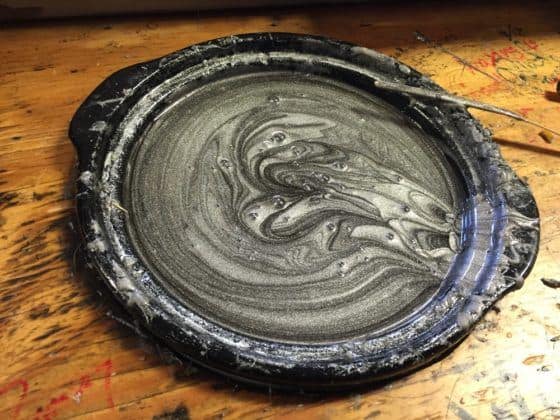
So I was taught to dip the bottles into that.
When I pulled a bottle out of the wax, I noticed that if I dipped a bottle into a section of wax that had air bubbles, then air bubbles would tend to form on the neck of the bottle, creating some rework and extra effort for me.
Also, the silver wax would tend to have streaks in it (as you can see streaks in the pot of wax, the color isn't 100% consistent). You can maybe see streaks on this bottle (and see a pigtail that's sort of flat against the bottle, a defect):
So, I learned that I could “scrape” the surface of the wax with a wood stick. This pushed the air bubbles and color streaks off the the edge of the crock pot, creating a more consistent surface to dip into.
See this video I made:
Here's a photo of how the wax looks after:
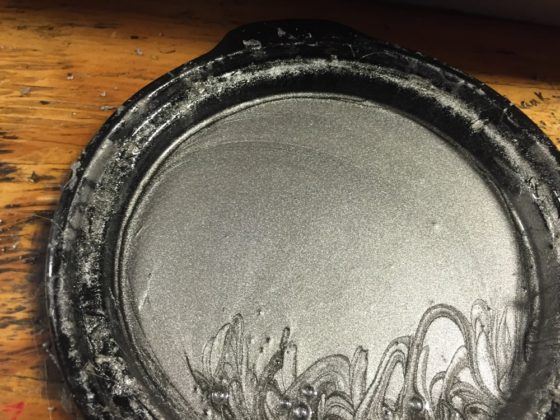
That gives enough area in which to dip the bottle without bubbles.
Spending a little time “prepping” the surface of the wax meant that I could do each bottle faster because I spent less time fussing with the bottle to deal with air bubbles, etc. I only had to “re-prep” the surface every once in a while or if a bubble formed.
Spending a little time saved me time.
Kaizen! Improvement. Change for the better.
It's “Kaizen” because it made my work easier. It improved quality and consistency. I did it because I WANTED to. This is really repetitive work and not particularly skilled work. But I discovered there was a “knack” to it. Doing repetitive work allowed me to exercise my brain to do problem solving and come up with a better way.
I didn't have to ask for permission to do the work differently, either.
So Then What?
I'm an individual worker, but there are others doing the same work.
An interesting thing happened… I tried sharing my discovery with other volunteers.
“Hey, can I show you something I learned about doing this?”
The general response was, “Nah, I'm doing fine… thanks, though.”
I decided not to push the issue with anybody. Change can be hard. Influencing others can be difficult. I decided to just go back to doing my job.
I did share my learning with the bottling manager, but I'm not sure this was incorporated into any sort of standard process or training.
I should probably follow up on this when I'm back at Garrison Brothers this week. If we're doing the regular bourbon with the black wax, it's probably not an issue… but we'll see.
Maybe I could volunteer to help create Lean or TWI-style “Job Breakdown Sheets” that could be used for training volunteers. Being able to train more effectively and more consistently could lead to better quality and productivity for the volunteers and the distillery.
But, it's also a social and fun activity… it's a business for Dan Garrison and company, but it's also a passion for the volunteers who cycle through the operation. I will probably write a follow up post on my experience this week.
Again, Garrison Brothers – their product, their people, and their passion are incredible. I'm glad to have the opportunity to volunteer and be a small part of this.
What do you think? Please scroll down (or click) to post a comment. Or please share the post with your thoughts on LinkedIn – and follow me or connect with me there.
Did you like this post? Make sure you don't miss a post or podcast — Subscribe to get notified about posts via email daily or weekly.
Check out my latest book, The Mistakes That Make Us: Cultivating a Culture of Learning and Innovation:



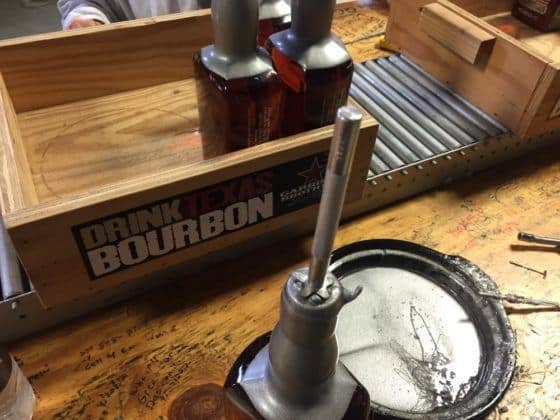
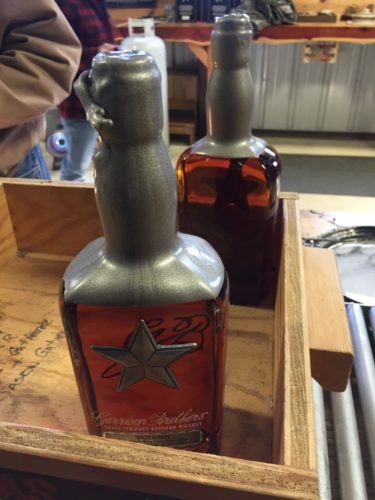
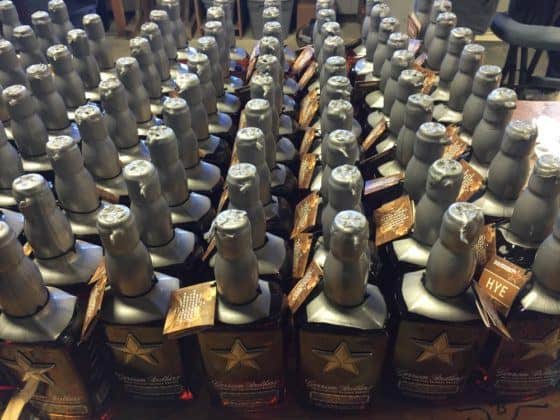







I have had a similar experience when volunteering. In my case it was primarily compiling a packet of information – very repetitive. It didn’t take me long to figure out ways to improve the process. Getting people to accept changes to the process is tricky when people are unfamiliar with each other (I have found). I was tried to get my group to change but they didn’t want to, but another group did so I showed them (they had overheard bits of it). At the end I think 4 of 6 groups switched (one of those that didn’t was my original group).
Even once it was obvious the new way was much quicker (over twice as quick) the group that decided “no” to switching stuck with their original decision. My guess is this relates to psychology and I bet experiments would show a group that decided “no” would be among the most stubborn at sticking with the old method because they would have to accept they were reversing their original decision.
I knew it could be tricky to get people to change and I tried to present the case for change in a way that had a good chance to success originally. Even so it failed. The psychology of such efforts is usually much trickier than the process improvement.
John, “ways to improve the process”.From the perspective of the worker,did your way make the job easier to do?
In Mark’s case rather than addressing the system ,he added an element to the job.
I added a step, but doing so saved me time. I think I did a better job of improving the local system I was working in more than a more limited view of “reducing waste” would have. I saved time and reduced defects.
Mark,I agree wth you.However that was a aSpecial cause fix.The Common cause fix would have been to modify/change the wax,I am thinking..
I fixed what I could… I had control over my method.
I agree that, if I were a long-term employee, I could help management see this problem with the wax and suggest that we work together to possibly find a different wax.
Or, maybe everyone ends up agreeing that it’s best to just change to method (or that’s the only solution if you can’t find a wax that meets all other requirements, but doesn’t streak).
I also learned about an employee Kaizen idea that was implemented (they don’t use the term “Kaizen, but the principles are clearly illustrated here, I think).
I noticed something was different compared to 6 months ago when I was last there… this fixture at the corking station:
The story behind it:
One day, the maintenance guy was brought in to help insert corks into bottles.
“After five minutes of pressing them in by hand, he [expressed dissatisfaction with the current state] and ran off.”
He quickly built the fixture that makes the work easier – probably also faster and more ergonomic.
Here’s a volunteer using the fixture:
I love the creativity. Larry, the maintenance guy, is working in a bureaucracy-free zone. He didn’t have to ask for permission. He didn’t have to create an A3 or dig for a root cause… he creatively (and at little cost) created a solution that made things better – right then, and right now.
There were some other complaints that the relatively new synthetic corks are “more difficult to insert” compared to the old caps with traditional cork.
Going to the synthetic cork was a countermeasure to a different problem… but, as we often see, “solving” one problem sometimes creates another problem or a side effect.
That’s another one of those situations, as Dick was referring to where:
1) the front-line employee can create a short-term fix
2) management owns the system and might need to investigate corks that possibly work better
Or, everyone ends up in agreement that the current cork plus the fixture is the best for the overall system.
It looks like the corks waiting to be pressed are stored in a small pail lined with a Walmart shopping bag. More of less waste.
Did you mean “more or less waste”??
Come on Mark,The LEVER and the WHEEL were fundamental to historical man around the planet..How long do you think in todays world ,tho identify the dilemma,get a Lean /six sigma stat person to do DOE translate the DOE data into some physical thing.
[…] How to Make Lean Whisky? […]